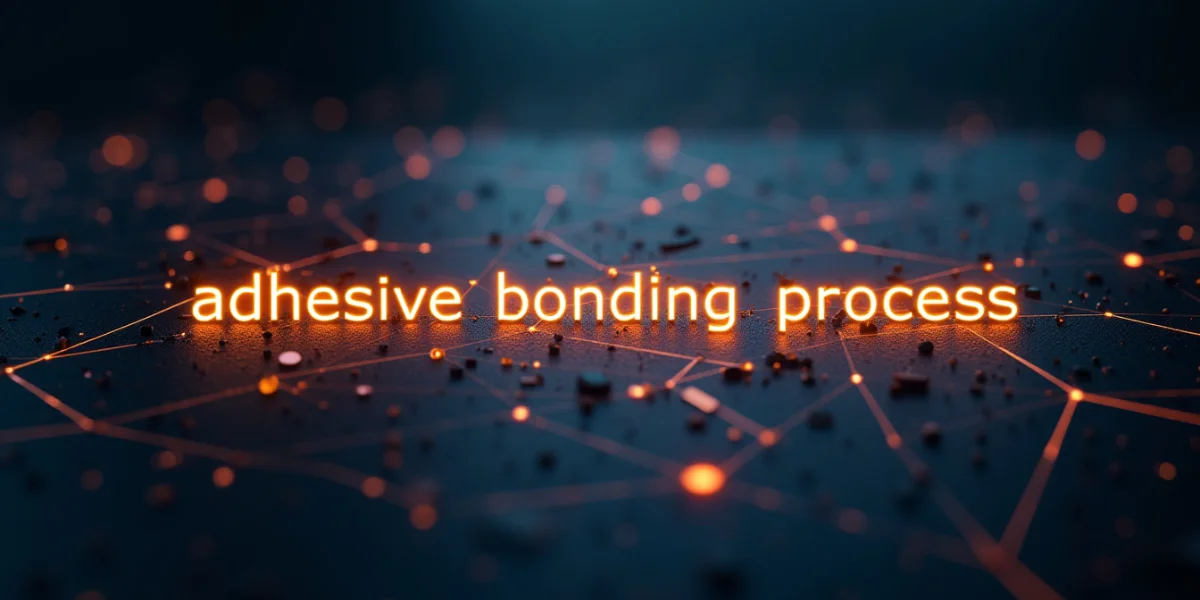
7 Crucial Steps in the Adhesive Bonding Process That Ensure Strong and Lasting Bonds
7 Crucial Steps in the Adhesive Bonding Process That Ensure Strong and Lasting Bonds

7 Crucial Steps in the Adhesive Bonding Process That Ensure Strong and Lasting Bonds
7 Crucial Steps in the Adhesive Bonding Process That Ensure Strong and Lasting Bonds
When done correctly, this process results in high-performance joints that handle stress, resist environmental damage, and maintain material integrity. With the increasing popularity of hot melt adhesives, pressure sensitive adhesives, and specialized formulations for different substrates, it’s essential to understand each step clearly. This article breaks down the step-by-step adhesive bonding process, helping both professionals and DIY enthusiasts achieve optimal results, reduce failures, and improve overall adhesive quality in their projects.
1. Surface Preparation for Adhesive Bonding
2. Choosing the Right Adhesive for the Application
3. Mixing and Dispensing Adhesives Correctly
Additionally, certain adhesive application methods like syringe dispensing, roller coating, or spray systems are used depending on the viscosity of the adhesive and the size of the bonding area. Automated systems help maintain consistency in hot glue adhesives for bonding, especially when used on production lines. Proper mixing and dispensing are often overlooked but play a significant role in achieving a reliable and durable adhesive bond.
4. Applying the Adhesive to the Surface
5. Mating and Clamping the Bonded Parts
6. Curing the Adhesive for Maximum Strength
For hot melt adhesives applications, maintaining proper temperature during bonding and cooling is crucial to achieving desired adhesive strength. A hot melt adhesive machine plays a key role in ensuring consistent application by precisely controlling temperature and flow. Overheating can degrade the adhesive, while underheating can cause poor flow and incomplete bonding. For heat-curing adhesives, ovens or infrared systems are used to accelerate the process in manufacturing settings. Curing is also impacted by humidity and ambient conditions, so be sure to follow the manufacturer’s specifications precisely.
7. Inspecting and Testing the Bonded Joint
FAQs
What is adhesive bonding process?
Adhesive bonding is a joining technique where glue or adhesives are used to hold two surfaces together, creating a durable bond without the need for mechanical fasteners.
Which adhesive is best for bonding?
The best adhesive depends on your material and application. Epoxy, polyurethane, and hot melt adhesives are commonly used for strong, durable bonds.
What are the types of adhesives used in bonding?
Common types include hot glue adhesives, epoxy, pressure sensitive adhesives, cyanoacrylate, polyurethane, and acrylic adhesives, each suited for specific applications.
How strong is adhesive bonding?
Adhesive bonding can be extremely strong, with adhesive strength ranging from moderate to structural, depending on adhesive type, surface prep, and curing.
What are the advantages of adhesive bonding?
Adhesive bonding offers uniform stress distribution, reduces weight, avoids drilling, and bonds dissimilar materials easily.
What is hot melt adhesive used for?
Hot melt adhesives are widely used in packaging, furniture, automotive, and product assembly due to their quick setting and high strength.
What is pressure sensitive adhesive?
Pressure sensitive adhesives stick when light pressure is applied and are used in labels, tapes, graphics, and temporary bonding.
How do you increase adhesive strength?
You can improve adhesive strength through surface cleaning, roughening, correct adhesive choice, proper clamping, and following curing instructions.
What is the curing time for adhesives?
Curing time varies by type—hot melt adhesives set in seconds, while epoxies and urethanes may take hours to fully cure.
What are the applications of hot melt adhesives?
Hot melt adhesives applications include carton sealing, bookbinding, woodworking, automotive interiors, and more where fast setting and strong bonds are required.
Mahisa Packaging Systems LLP
Office Address :
Service & Spares :
Sales Inquiry :
Sales phone: +91 98210 49426
+91 84510 70625
+91 72089 76891
Sales email: sales@mahisa.com
Social Links :
Need Help? Chat with us